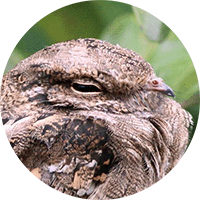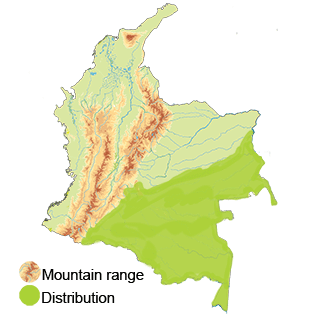Ladder-tailed Nightjar
The Ladder-tailed Nightjar (Hydropsalis climacocerca) Read in Spanish
Appearance: The Ladder-tailed Nightjar is a medium-sized bird with a cryptic plumage that provides effective camouflage during the day. It has a distinct ladder-like pattern on its long, outermost tail feathers, which gives it its name. Its feathers are commonly gray, brown, and buff-colored, helping it blend into its surroundings.
Habitat: The Ladder-tailed Nightjar is typically found in open woodland, scrubland, and grasslands. It prefers dry and arid regions, including savannas and open plains. This species is known to inhabit tropical and subtropical regions from lowlands to higher elevations.
Behavior: Nightjars are nocturnal birds and are known for their distinctive calls often heard at dusk and dawn. Ladder-tailed Nightjars are insectivorous, hunting for insects like moths, beetles, and flying ants during the night. They are known for their aerial acrobatics, catching insects on the wing, and are highly maneuverable in flight.
Breeding: Breeding usually occurs during the wet season when insect populations are abundant. These birds lay their eggs on the ground, often in open areas with minimal vegetation. The female typically incubates the eggs while the male assists in protecting the nesting site and feeding the young.
Conservation Status: The specific conservation status of the Ladder-tailed Nightjar in Colombia may vary; however, it is generally thought to be of Least Concern in terms of global conservation status due to its relatively stable populations.
Distribution
The Ladder-tailed Nightjar (Hydropsalis climacocerca)
Orinoquía Region: This region includes departments such as Casanare, Arauca, and Vichada. Ladder-tailed Nightjars are known to inhabit open plains, savannas, and grasslands in the Orinoquía region.
Amazon Region: Departments like Putumayo, Caquetá, Guaviare, and Vaupés form part of the Amazon region in Colombia. In the Amazon rainforest, these nightjars are found in open areas with sparse vegetation and along forest edges.
Taxonomy
The Ladder-tailed Nightjar (Hydropsalis climacocerca)
- Kingdom: Animalia
- Phylum: Chordata
- Class: Aves (Birds)
- Order: Caprimulgiformes
- Family: Caprimulgidae
- Genus: Hydropsalis
- Species: Hydropsalis climacocerca
Vocalization
The Ladder-tailed Nightjar (Hydropsalis climacocerca)Nightjar:
- Churring Call: The primary vocalization of the Ladder-tailed Nightjar is a distinctive, repetitive churring call. This call is often described as a mechanical or rhythmic sound that can resemble the sound "churr-churr-rrrr." The churring call is typically loud and carries over long distances, aiding in communication between individuals.
- Chirping and Clicking Sounds: In addition to the churring call, Ladder-tailed Nightjars may produce various chirping and clicking sounds. These sounds can serve different purposes, such as signaling to other nightjars, attracting mates, or indicating alarm or distress.
- Territorial Calls: Ladder-tailed Nightjars use vocalizations to establish and defend their territories.Males may engage in vocal displays to assert dominance and deter rival males from encroaching on their territories.
- Courtship Calls: During the breeding season, male Ladder-tailed Nightjars may produce elaborate vocalizations as part of their courtship displays. These courtship calls are often accompanied by aerial displays, where males show off their agility in flight while vocalizing to attract females.
- Dusk and Dawn Activity: Ladder-tailed Nightjars are most vocal during the twilight hours, particularly at dusk and dawn.




